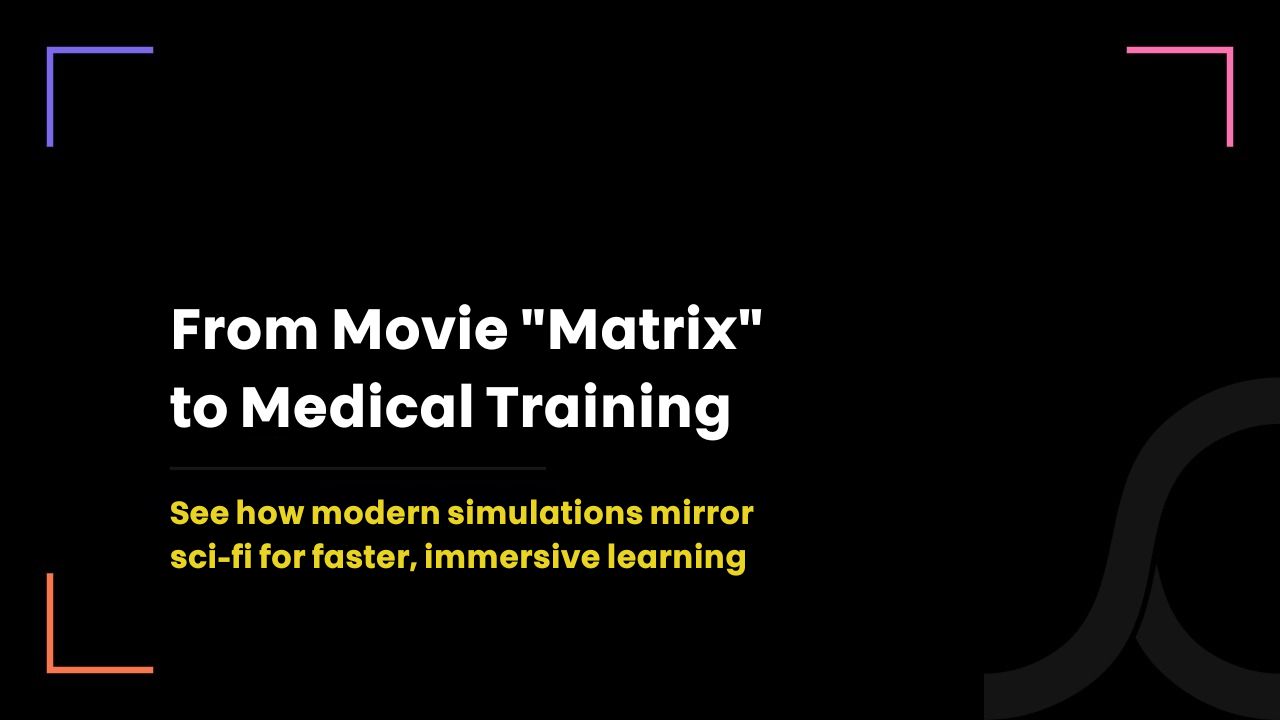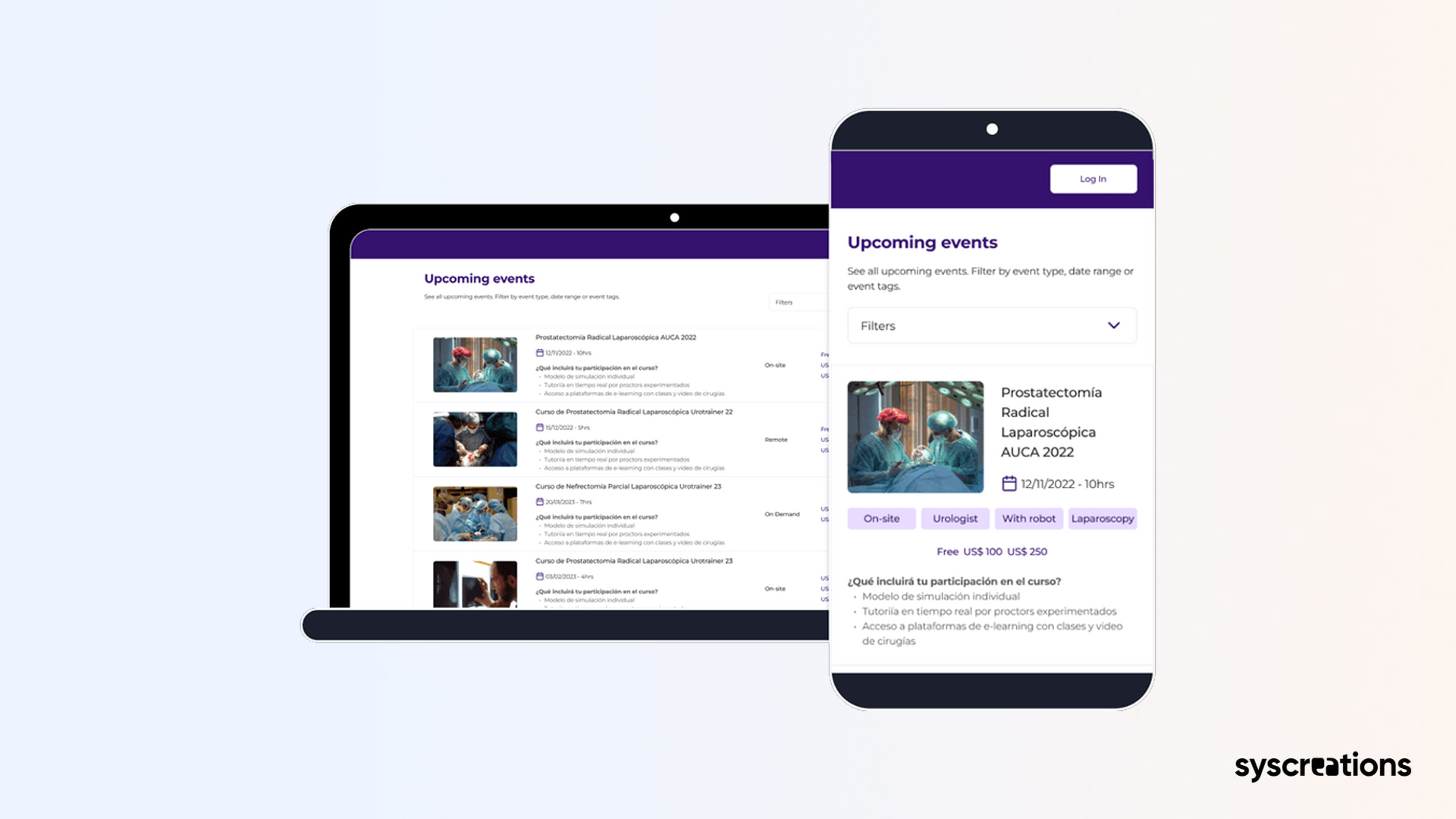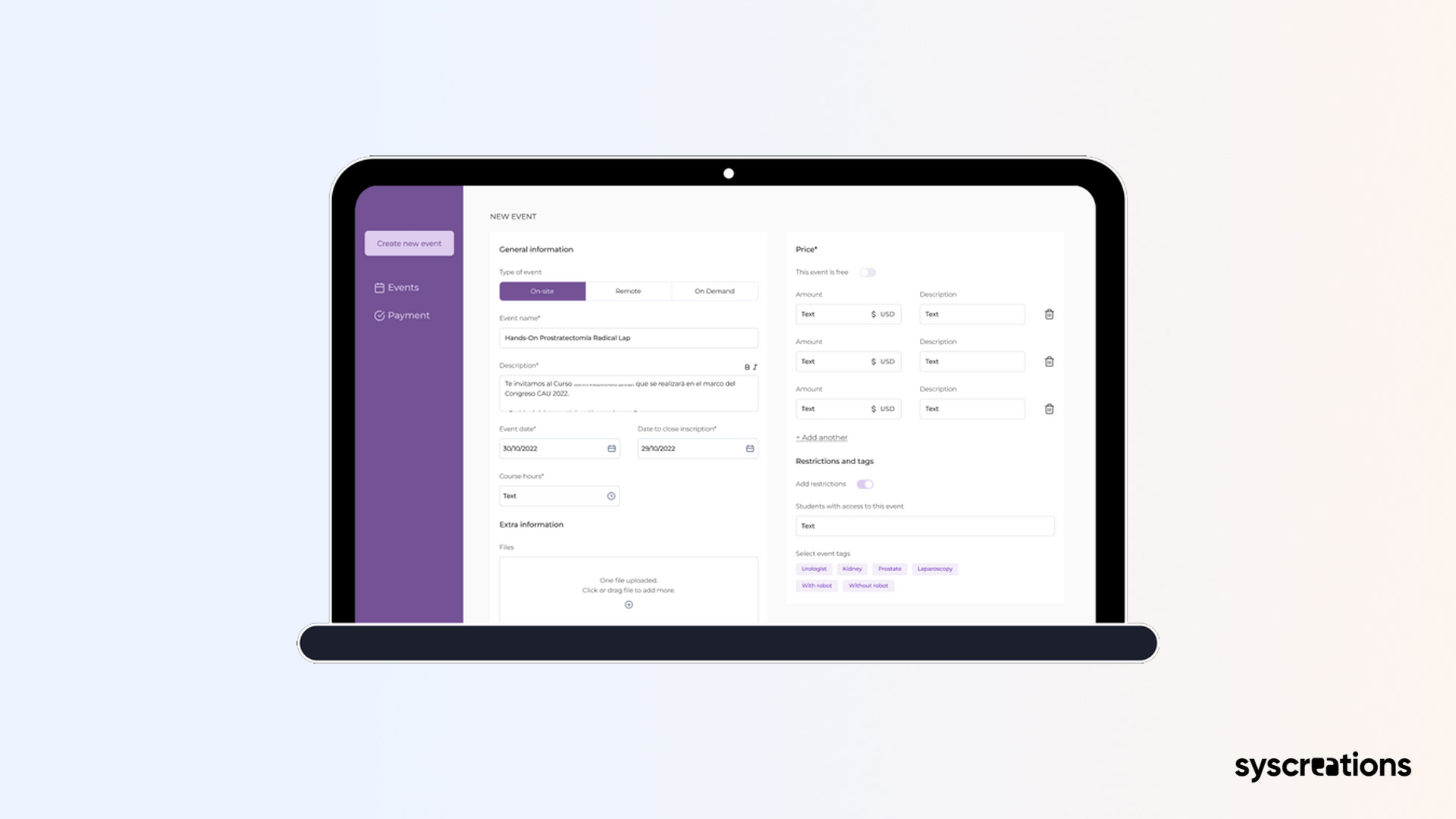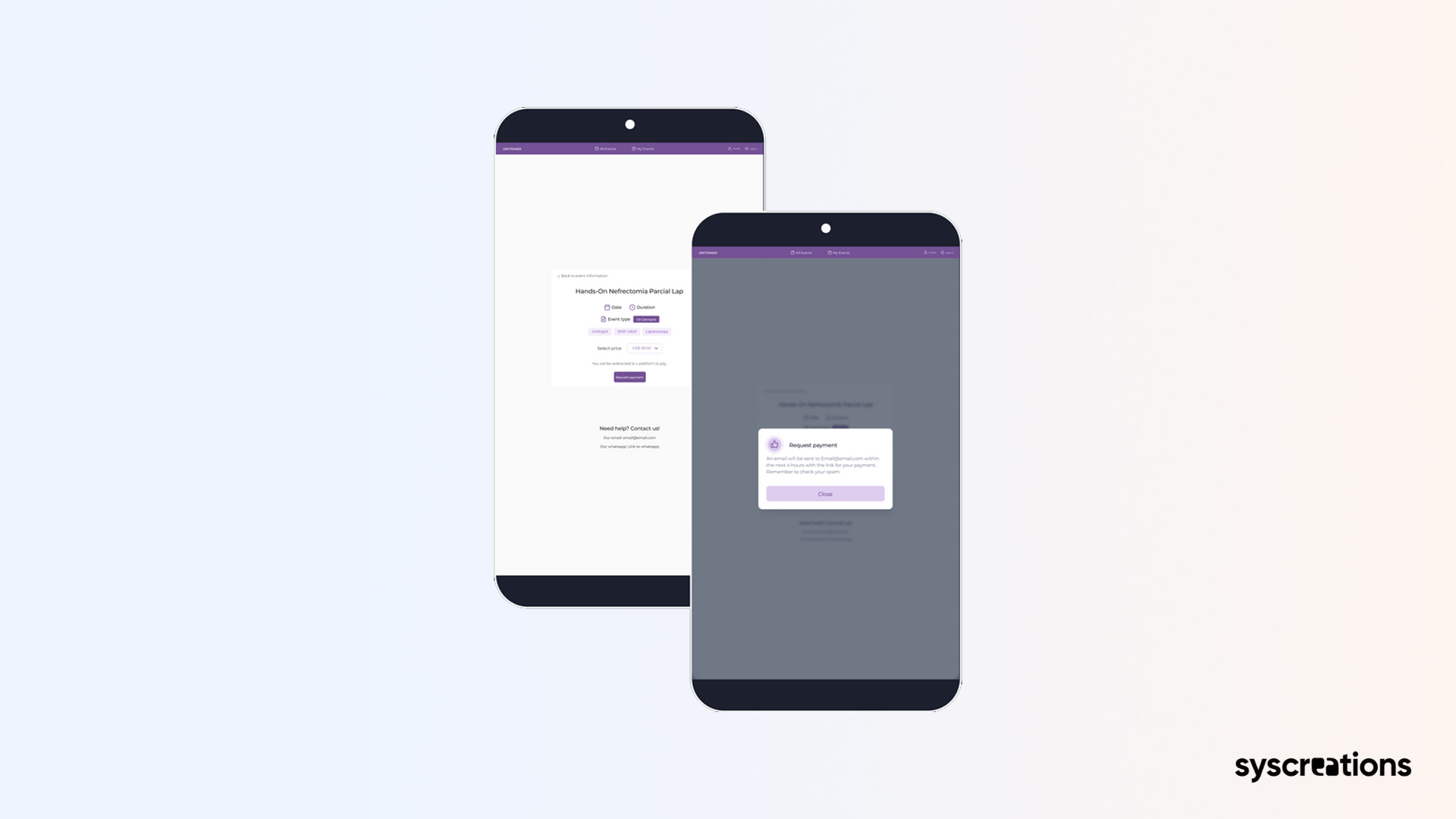Build a Medical Simulation Software to Reduce Medical Errors

8 months ago
Medical simulation software is used to teach, train, and assess healthcare professionals.
It comes in various forms, including virtual simulations, replicas of healthcare environments, and manikins.
This software helps medical organizations provide ongoing education and training efficiently and cost-effectively.
Medical simulation technology is transforming how healthcare professionals prepare for real-life situations.
Why Medical Simulation Software?
Medical simulation software creates virtual environments that mimic real-world medical scenarios.
These simulations offer a risk-free space for healthcare professionals to practice, learn, and refine their skills.
By engaging with these scenarios, practitioners can prepare for complex procedures, improve decision-making, and ultimately reduce the likelihood of errors.
Here are some common types of medical simulation
- EMS Simulators: Mimic emergency medical situations.
- Simulated Medications: Allow practice with medication administration.
- Manikin Simulators: Replicate human anatomy for hands-on training.
- Part-Task Simulators: Focus on specific skills or procedures.
- Simulation Recording Systems: Record and review simulation sessions.
- Augmented Reality (AR): Overlays digital information on the real world.
- Virtual Reality (VR): Creates immersive, computer-generated environments.
- Computer-Based Simulations: Offer virtual scenarios for practice.
6 Key Features of Medical Simulation Software (4th Is Very Important)
1. Realistic Simulation Scenarios
The core of any medical simulation software is its ability to provide realistic and immersive scenarios.
This includes replicating medical conditions, procedures, and environments that healthcare professionals encounter in real life.
2. Interactive Training Modules
Interactive modules allow users to engage with the simulation actively.
This can include virtual patients, interactive tools, and real-time feedback mechanisms to enhance learning and practice.
3. Performance Tracking & Analytics
To measure progress and effectiveness, the software should track performance metrics.
This includes recording user actions, providing feedback, and analyzing data to help users improve their skills over time.
4. LMS and System Integration
Integrating with Learning Management Systems (LMS) and existing tools like EHRs and wearable devices is essential.
It ensures simulations align with educational goals. This integration provides a unified platform for managing and enhancing learning experiences.

5. Customizable and Scalable Scenarios
The software should allow customization of scenarios to meet specific training needs and be scalable to accommodate varying user numbers and evolving institutional requirements.
6. Accessibility and Usability
Ensuring that the software is user-friendly and accessible across different devices is important.
An expert UI/UX designer ensures the software is easy to navigate and suitable for both beginners and experienced users.
Top 7 Examples of Simulation Software Applications in the Healthcare Industry

Founded in 1941, Nasco Healthcare, also known as eNasco, provides digital health solutions for nursing and healthcare. Their products include:
- Patient Communication Simulator (PCS): ALEX, which helps in communication training with patients.
- Body Interact: Mimics real medical cases on a virtual patient simulator for enhanced clinical reasoning.
- Casualty Care Rescue Randy: Trains first responders.
- TERi: A senior care trainer for professionals.

Based in Pittsburgh, Kb Port specializes in multimedia software solutions, particularly in medical simulation. Key products include:
- SimEMR: A web-based interactive solution for medication administration and health record navigation.
- MedSkills Enterprise and Local: Facilitates critical medication administration training.
- Programmable Patient Monitor: It will allow educators to create practical learning scenarios with specific vitals.

Oxford Medical Simulation (OMS) uses VR to transform medical training. Their VR solutions include:
- OMS Nursing: Provides realistic nursing training.
- OMS Medical: Customizable learning for medical professionals.
- OMS Interprofessional: Enables learners to interact in realistic scenarios.
- OMS Distance: Online distance learning for global medical students.
4. International Pediatrics Simulation Society (IPSS)

IPSS is a global community focused on improving pediatric care through simulation-based training. Notable initiatives include:
- ETAT Course: In collaboration with WHO, it trains healthcare workers to identify emergency and priority cases.
- Partnership with Malawi Ministry of Health: Aims to improve healthcare quality and education in Malawi.
- Collaboration with Pediatric Simulation Training and Research Society of India: Promotes simulation-based pediatric care improvements in India.

Founded in 2014, MedVision designs high-quality medical simulators. Key products include:
- Leonardo: An adult male human patient simulator.
- Arthur & Mia: Pediatric simulators for younger patients.
- AngioVision: Simulators for endovascular procedures.

Specializing in endovascular therapy simulation, mentice offers software and hardware solutions. Key offerings include:
- VIST: Allows healthcare professionals to rehearse procedures on virtual patients.
- SimMan Vascular: An immersive training solution in partnership with Laerdal.

An innovative EHR company, MedAffinity develops software simulation solutions.
Their collaboration with CAE Healthcare's LearningSpace integrates simulation solutions with EHR platforms to provide realistic training for healthcare professionals.
How We Developed a Uro-Oncology Simulation for Our Client
We’re a Burlington-based health-tech company with over 10 years of experience in healthcare projects.
We recently tackled an exciting challenge. One of our clients needed a specialized Uro-Oncology simulation.
With our team of over 50 dedicated professionals, we conducted a thorough analysis and developed a solution tailored to their needs.
Let’s explore how we achieved success in creating this innovative simulation.
The Challenge
Medical students and surgeons face immense challenges and stress when learning and preparing for surgery.
Our client aimed to revolutionize surgical training by providing an immersive and transformative learning experience.
The goal was to create a platform where students could simulate surgeries, receive real-time feedback, and engage in team training.
The Solution
We partnered with our client to develop a cutting-edge online portal designed to elevate simulation-based learning.

The platform focuses on enhancing laparoscopic and robotic skills through realistic anatomical models and simulators.
Our solution offers both online and remote access, allowing medical schools, clinics, and surgical groups to improve their training processes.
The portal includes features for event management, student tracking, and detailed simulation organization, all designed to enhance medical education and patient care.
Tech Stack
- Laravel
- React
- Digital Ocean
How It Works
Event Management

Platform managers and trainers can create and coordinate masterclasses, oversee student management, and track subscriptions.
Student Registration and Transactions

Students can enroll in classes, authenticate, pay, and access materials and evaluation forms. They also have the ability to track their progress.
Public Access
Guests can register for and enroll in public masterclasses.
Technical Challenges
We encountered several challenges during development:
- Centralization Issues: Our client struggled with consolidating course catalog actions and managing resources on a single platform. This lack of centralization hindered effective event tracking and progress management.
- Brand Identity: The client needed a distinct platform for course sales but had yet to establish a clear brand identity. This challenge made it difficult to attract new students and stand out in the market.
The Outcome
Our collaborative efforts resulted in a robust and intuitive platform that addresses the needs of medical training institutions.
By offering a comprehensive and user-friendly solution, we empowered our client to provide an exceptional learning experience and improve training outcomes.
Tech Stack for Building Medical Simulation Software
Creating effective medical simulation software requires a combination of technologies that support realism, interactivity, and scalability.
Here’s a look at the essential components of the tech stack we use in our medical simulation software:
Front-End Development
- Languages: HTML5, CSS3, JavaScript
- Frameworks: React, Angular, or Vue.js for creating responsive and interactive user interfaces.
Back-End Development
- Languages: Python, Java, or Node.js
- Frameworks: Django (Python), Spring Boot (Java), Express (Node.js) for server-side logic and application management.
Database Management
- Databases: PostgreSQL, MySQL, or MongoDB for storing user data, simulation scenarios, and performance metrics.
Simulation Engines
- Platforms: Unity or Unreal Engine for developing realistic 3D environments and simulations.
Integration Tools
- APIs: RESTful APIs or GraphQL for integrating with other systems, such as LMS or electronic health records (EHRs).
Curious About the Cost of Developing Medical Simulation Software? We Can Help!
Developing medical simulation software is a complex process, and costs can vary widely based on factors like technology, features, and vendor fees.
There's no one-size-fits-all price, but we can provide a fair estimate tailored to your needs.
At SyS Creations, we offer free consultations to address all your questions and provide a cost estimate for your project.
If you're planning to build a medical simulation lab, we can assist with that too.
Designing for healthcare education requires specialized knowledge. A lab for nursing students differs greatly from one for medical students focused on surgery.
Our team leverages over a decade of exclusive experience in healthcare.
We’re not just coders—we’re a collaborative group of researchers, QA experts, AI/ML analysts, medical scholars, and healthcare professionals.
At SyS Creations, we provide complete simulation solutions. We handle everything from design and installation to programming and training, offering long-term support without hidden costs.
Connect with us at hello@syscreations.ca or call +1 905 635 7574.
Let us help you design a customized, effective simulation lab for your needs.
